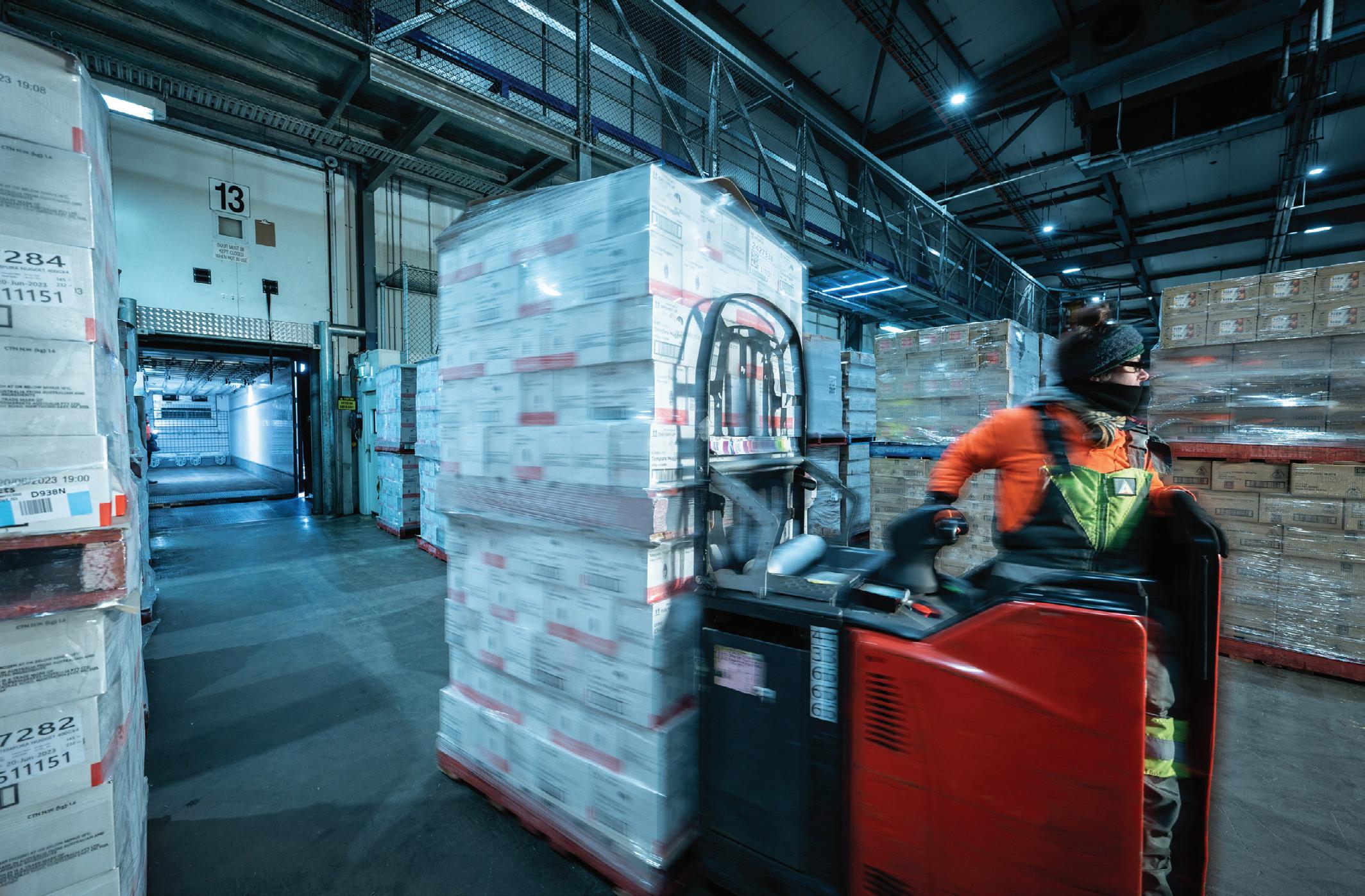
4 minute read
Edible defrost sensor for frozen food
iStock.com/Savany
COLD CHAIN & REFRIGERATION
Edible defrost sensor for frozen food
Freezing food, especially meat, can increase shelf life and reduce waste; however, the quality of the food can be affected during freezing and thawing, and this can have potentially harmful consequences to consumers as it can increase the count of many pathogenic microorganisms.
When consumers are standing in the frozen food aisle, it’s nearly impossible for them to know whether a steak has thawed and refrozen. Therefore, a team of researchers reporting in ACS Sensors have designed a food-grade device from edible materials, including table salt, red cabbage and beeswax, that can help to detect previous defrosting events in the frozen product. The proof-of-concept sensor provides a colour readout when it’s warmed above a specific temperature, which is tunable from -50 to 0°C.
Keeping food cold while it’s transported and stored is essential to retaining its flavour and quality, reducing the risk of food poisoning and minimising waste. While researchers have developed devices that alert manufacturers when cold items are exposed to unwanted temperatures, they only indicate changes above freezing. To create a sensor for frozen products, one solution could be to use materials with electrical properties that are altered upon melting. It would also be ideal if such changes could produce a signal, such as a visible colour change. In addition, an edible electronic device, which uses only food and consumable components, would be the safest way to monitor food. Therefore, Ivan Ilic, Mario Caironi and colleagues set out to develop a fully edible, self-powered temperature sensor with a visible colour indicator for use with frozen products.
The researchers started by building a device that generated an electrical current as it defrosted, connecting magnesium and gold electrodes through an electrolyte solution held in a plastic container. They tested the device with solutions of frozen edible electrolytes, including table salt and calciumcontaining salts, and naturally electrolyte-rich foods, including a grape, melon and apple. As the solutions defrosted, they conducted current between -50 and 0°C, which the researchers say could be fine-tuned, based on the amount and identity of the salt. Next, this device was connected to a colour-changing system, containing tin and gold electrodes and red cabbage juice, that produced an irreversible shift from reddish purple to blue when current was applied.
In the final step, the team put all of the parts together in a block of beeswax that held the temperature-activated and indicator solutions in separate chambers, and demonstrated that the self-powered device could be used for frozen food monitoring.
The researchers say that their proof-of-concept sensor paves the way for edible materials to be used in inexpensive, safe technologies that alert customers to a frozen product’s storage history.
As a sensor, it could be used by the workers in the supply chain, while as a detector, it could be useful for end consumers, ensuring that the food was properly frozen during the whole supply chain.




Pallet tank mixers
Australian designed and made Mixquip Series 200 pallet tank mixers can be used to mix, blend or maintain particles in suspension, in any liquid shuttle, or pallet tank.
Available with electric or pneumatic drives and all stainless steel wetted components, Mixquip Shuttle Mixers can thoroughly mix thick and heavy products, including 10,000 cPs slurries, syrups and gels, in pallet tanks.
Electric Pallet Tank mixers can be ordered with variable speed controls so the mixing intensity of the mixer can be slowed down to mix water-like products and increased to mix very thick liquids. The mixing intensity on pneumatic drive mixers can be adjusted via the integrated air valve. The adjustable clamping mechanism is designed to ensure that any Mixquip pallet tank mixers can be securely fitted onto all pallet tanks and shuttles.
Garlic puree, cream, 60 Brix sugar syrup, emulsifiers, colours, flavours, alcohol and spirit-based liquors have all been successfully mixed in pallet tanks and shuttles using Mixquip Pallet Tank Bridge Mount Mixers, equipped with ToroJet folding impellers.
The optional 316 stainless steel additions port allows liquids and powders to be added directly to the mixture in the pallet tank, whilst the mixer is in operation, providing a faster, more homogeneous mixture.
Teralba Industries
www.teralba.com
Burner base unit
Safely manage the control and monitoring of the entire furnace, including the burner, with the base unit PNOZ m B1 burner from Pilz small safe controllers PNOZmulti 2. It supports simultaneous monitoring and safe control of furnaces from Version 10.12 of the software tool PNOZmulti Configurator.
Manufacturers of burner and thermal plant and machinery have many legal and normative requirements to consider. A variety of burner applications can be configured and plant-dependent safety functions monitored concurrently.
This provides a burner function block for configuration of the base unit PNOZ m B1 Burner. This new software element is certified in accordance with the relevant European standards, including EN 298 and EN 50156, meeting the highest safety requirements.
The burner function block emulates the advanced functionality of an electronic automatic burner control system with flexible configuration. As a result, it can manage the entire plant. The company suggests that users save time when designing and engineering their furnace. This means that various burner types, such as master and slave burners, direct or indirect ignition and low- or hightemperature operation can be controlled and monitored safely.
Pilz Australia Industrial Automation LP
www.pilz.com.au












